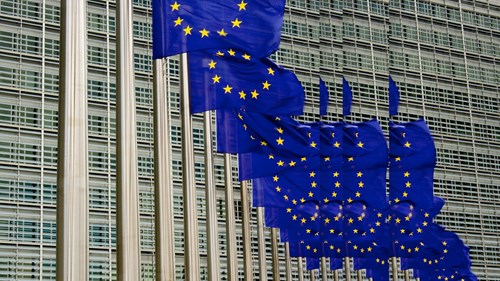Carbon Border Adjustment Mechanism Adopted
The Carbon Border Adjustment Mechanism (hereafter “the CBAM”), a key element of the European Green Deal legislative package, has been conclusively adopted by the European Union (“EU”) legislators (European Parliament and Council of the European Union). Following the formal adoption of the CBAM by the European Parliament on 18 April 2023, the Council of the European Union adopted the new law on 25 April 2023. It will be published in the EU Official Journal in the coming weeks and will enter into force twenty days later.
The CBAM addresses imports of products/goods into the EU from carbon-intensive industries. It aims at equalising the carbon costs contained in domestic and imported products, by imposing a carbon price on certain (defined) imported products, which risk offsetting EU greenhouse gas emissions reduction efforts, whilst simultaneously encouraging collaboration with non-EU businesses adhering to high climate standards.
The carbon price principally covers direct and indirect emissions from the production of electricity consumed during the production processes of CBAM goods, with the exception of goods for which the EU Emissions Trading System (hereafter “the ETS”) allows Member States to compensate indirect costs, such as iron and steel, aluminium, hydrogen, for which only direct emissions will be taken into account (see Annex II of the CBAM).
The European Commission’s CBAM Proposal was presented in July 2021 as part of the so-called “Fit for 55” package. An provisional agreement on the Proposal was reached in December 2022 (see our related News Alert here).
Key Differences to the Initial Proposal
The CBAM covers a wider range of products compared to the initial Proposal, more precisely: cement, electricity, fertilisers, iron and steel, aluminium, hydrogen and some precursors and downstream products made from cement, iron and steel, aluminium (see Annex I of the CBAM for the concerned CN codes), so-called CBAM goods.
The final text also stipulates a more centralised model of implementation through the European Commission (hereafter “Commission”), for which the Commission has requested more resources, and pushes back the beginning of the transitional period from January until October 2023.
Links with EU ETS Reform
Together with the CBAM, the legislators also officially endorsed the Commission Proposal to review the ETS, another key aspect of the Fit for 55 package.
The EU ETS is a market-based mechanism which caps greenhouse gas (hereafter “GHG”) emissions by dividing them into allowances, each representing one tonne of CO2. The emissions allowances are mostly auctioned but some are distributed to industries at risk of carbon leakage for free.
The EU ETS was launched in 2005 and reviewed for the last time in 2018, determining the total quantity of emissions allowances for the so-called phase 4 until 2030. The Proposal to review the ETS concerns the ongoing phase 4, with the aim of reducing the phase 4 cap and introducing a more ambitious linear reduction factor for GHG emissions, in order to align with the 2030 target of reducing net emissions by 55%. A provisional agreement was reached in December 2022, a few days after the agreement on the CBAM (see our related News Alert here).
The successful conclusion of the negotiations on the reform of the ETS was crucial to the final adoption of the CBAM, as the CBAM will replace the ETS in the sectors to which it applies. This will be achieved by a phasing-out of the free ETS allowances from 2026 to 2034 and a corresponding phasing-in of the CBAM. The reduction rate for free ETS allowances is as follows: 2026: 2.5%; 2027: 5%; 2028: 10%; 2029: 22.5%: 2030: 48.5%; 2031: 61%; 2032: 73.5%; 2033: 86%; 2034: 100%.Until the free ETS allowances are completely phased out, the financial obligations under the CBAM will only apply to the proportion of emissions which do not receive free allowances under the ETS.
Overview of CBAM Obligations
The CBAM will become fully operational from January 2026, however, there will be a transitional phase starting as early as in October 2023. During this phase, importers of CBAM goods must provide a quarterly report 30 days after the end of each quarter, specifying the total quantity of each type of CBAM good imported during the quarter, the actual total embedded emissions and total embedded indirect emissions in those goods and any carbon price due in the country of origin for the embedded emissions. From 1 January 2025, importers must also designate and apply for the authorisation of a CBAM declarant in the EU Member State where the importer is established.
As from 1 January 2026, only authorised declarants will be able to import CBAM goods and will need to submit a yearly CBAM declaration, imposing further obligations such as purchasing and surrendering CBAM certificates.
Implications for Importers and EU Downstream Producers
The CBAM undoubtedly triggers organisational changes for importers of CBAM goods. Additionally and importantly, the CBAM could also affect EU downstream producers using CBAM product categories as inputs in their supply chain. Against this background, downstream producers could be encouraged to reconsider their suppliers, seeking out less carbon-intensive inputs to avoid paying the financial adjustment.
It is also important to note that before the end of the transitional phase on 31 December 2025, the Commission will submit a report to assess an extension of the scope of the CBAM to other products. Similarly, the Commission aims to evaluate the effectiveness of the CBAM in addressing the risk of carbon leakage for goods exported from EU to countries that do not apply ETS or implement similar mechanisms. If appropriate, the Commission will present a legislative proposal, further extending the application of the Fit for 55 package to companies.
In conclusion, the CBAM and the revision of the ETS intend to accelerate the decarbonisation and the adoption of low-carbon technologies in specific sectors. Therefore, it is critical for companies to remain well-informed of the developments and carefully evaluate the overall impact on their business activity.
If you or your company are interested in further guidance with respect to the CBAM or the revision of the ETS, including on the application of the CBAM to business activity or compliance obligations, please do not hesitate to reach out to our international and EU trade and energy teams.
Well
informed
Subscribe to our newsletter now to stay up to date on the latest developments.
Subscribe now


